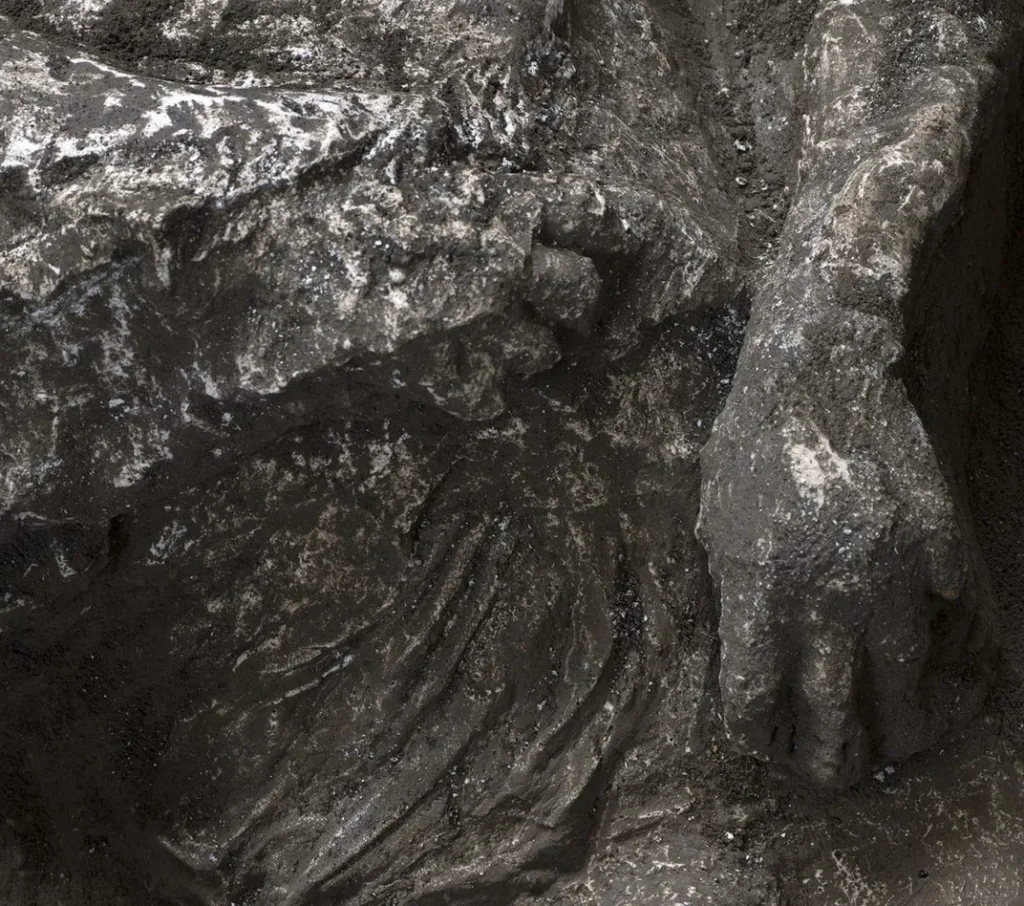Well-Preserved Remains of Two Vesuvius Victims Found in Pompeii
When Mount Vesuvius erupted in 79 A.D., a wealthy man of 30 or 40 and a younger enslaved man survived the immediate impact, only to die in a second volcanic blast the following day.

Two millennia later, reports Angela Giuffrida for the Guardian, archaeologists excavating a villa on the outskirts of the ancient Roman city have found the pair’s remains, eerily frozen in their final death throes.
Based on traces of the older man’s clothing, which included a woolen cloak, researchers from the Archaeological Park of Pompeii say he was probably a person of high status. The body of the younger man, aged 18 to 25, had several compressed vertebrae, suggesting he was a manual laborer.
Likely enslaved by his companion, the second individual wore a short, pleated tunic possibly made out of wool. The team found the remains in an underground corridor of the ruined structure beneath more than six feet of ash.
“The victims were probably looking for shelter in the cryptoporticus, in this underground space, where they thought they were better protected,” Massimo Osanna, director general of the archaeological park, tells the Associated Press’ Frances D’Emilio.
Instead, the duo died in a rush of heat and volcanic debris that flowed into the building
“It is a death by thermal shock, as also demonstrated by their clenched feet and hands,” Osanna tells Angelo Amante of Reuters.
Archaeologists preserved the newly discovered remains using a variation of a technique developed by Italian archaeologist Giuseppe Fiorelli in 1863.
The process involves pouring liquid chalk into cavities left by decomposing bodies; this plaster fills gaps in preserved bones and teeth, creating a cast of the bodies as they looked at the moment of death.



“It is impossible to see those deformed figures, and not feel moved,” wrote Italian author Luigi Settembrini in his 1863 “Letter to the Pompeians,” as quoted in a statement from the archaeological park.
“They have been dead for eighteen centuries, but they are human beings seen in their agony. This is not art, it is not imitation; these are their bones, the remains of their flesh and their clothes mixed with plaster, it is the pain of death that takes on body and form.”
Pompeii now contains the bodies of more than 100 people preserved as plaster casts. Osanna tells the Times that the technique captured fascinating details of the newly discovered bodies, including the “extraordinary drapery” of their wool garments.
“They really look like statues,” he says.
The new find is located in Civita Giuliana, about 750 yards northwest of Pompeii’s city walls. The villa is on private property, and government-commissioned excavations only began there in 2017, when archaeologists stepped in to help prevent looters from tunneling into the site and stealing artifacts.
This isn’t the first impressive find made at the villa: In 2018, archaeologists unearthed the preserved remains of three horses, still saddled and harnessed as if ready to depart at a moment’s notice. Research teams also found a whole street of large houses lined with balconies.
The ruins of Pompeii, a city of about 13,000 people at the time of its destruction, have fascinated people around the world for centuries. Roman magistrate Pliny the Younger, who witnessed the destruction from a neighboring city, described it as “an extraordinary and alarming” scene.
Spanish king Charles III of Bourbon began the first official excavations of the site in 1748. Work has continued ever since. (Launched in 2012, the $140 million Great Pompeii Project seeks to conduct the most extensive scientific investigation of the site to date.)
The preserved city, with its inhabitants forever caught in the middle of daily activities, has yielded much information about life in ancient Rome, from Pompeiians’ culinary habits to their fertility and love rituals.
